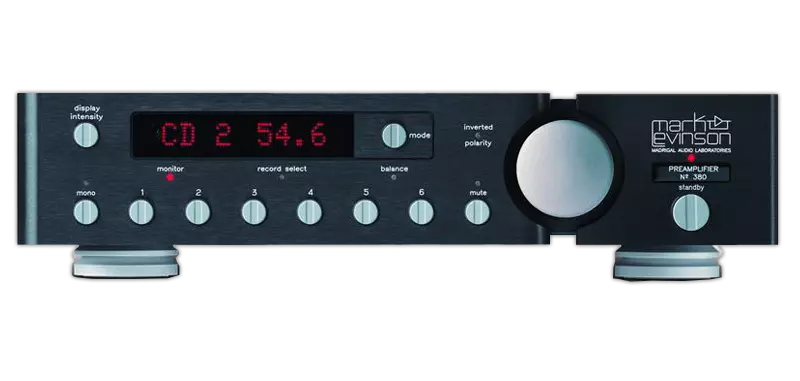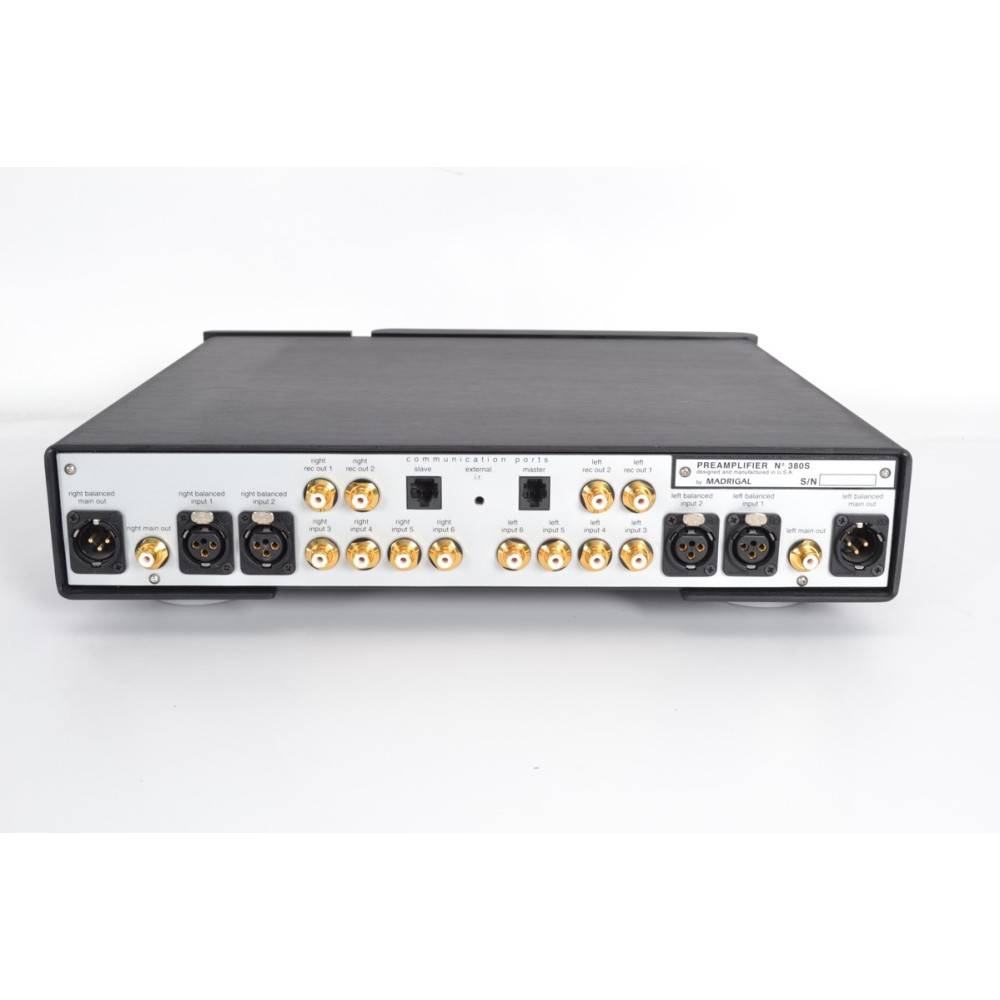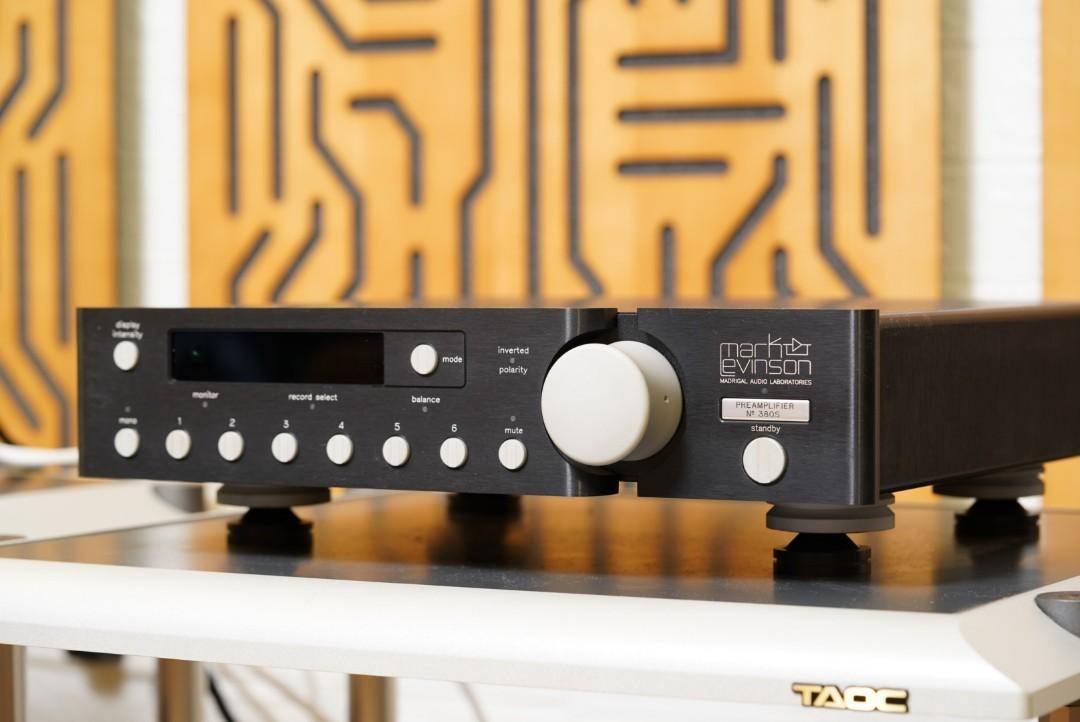Mark Levinson 380S Preamplifier
Original price was: R145,000.00.R46,000.00Current price is: R46,000.00.
Mark Levinson No.380S preamplifier
“Comping,” they call it at Madrigal. Once a circuit and its board layout have been finalized, passive components are substituted one by one in an exhaustive series of listening tests to determine the places where use of a premium part, or one of closer tolerances, results in an audible benefit. This fine-tuning process cannot be open-ended, however, as products do have to shipped. So what happens when new parts become available, or new manufacturing processes allow a better-sounding part to be used without financial penalty? All manufacturing companies deal with this question continually, but with Madrigal’s Mark Levinson brand, we’ve become accustomed to the decimal progression: the No.20 monoblock became first the No.20.5, then the No.20.6; the No.30 D/A processor metamorphosed into the No.30.5, the No.31 transport into the ‘31.5. But the pattern was broken when the substitution of a new printed-circuit-board material transformed the No.38 preamplifier into the No.38S.
All manufacturing companies deal with this question continually, but with Madrigal’s Mark Levinson brand, we’ve become accustomed to the decimal progression: the No.20 monoblock became first the No.20.5, then the No.20.6; the No.30 D/A processor metamorphosed into the No.30.5, the No.31 transport into the ‘31.5. But the pattern was broken when the substitution of a new printed-circuit-board material transformed the No.38 preamplifier into the No.38S.
The Mark Levinson No.38S has been my reference preamplifier for the past three years (footnote 1), but as a result of major “comping,” the ’38S was transformed this past summer into the No.380S. The circuit and pcb material are the same, the remote-controlled, MDAC-based, 0.1dB-step, balanced volume control is the same, the appearance is the same, even the price ($6495) is the same—but the substitution of 106 passive components in strategic places resulted in a sufficiently large sonic improvement that Madrigal felt a new model designation was called for.
So how does the new preamplifier sound?
First, don’t listen to the piece until it’s warmed up—out of the box, my sample was rather upfront in its presentation. But after two hours it settled down, and I was able to do some serious listening. I used both the ‘380S and the original review sample for extended periods, as well as doing A/B comparisons at matched levels (something made trivially easy by the preamps’ repeatable and well-calibrated level settings).
Second, how do you describe the sound of something that’s superficially identical to your reference, but better? Audiophiles habitually refer to sonic differences between two components in terms of differences in frequency balance: A had more bass, B had more treble, C had a depressed midrange. But when comparing the two Levinson preamps, I kept hearing how similar they were on these terms. There were no response or balance differences that I could confidently hang my hat on, yet there was a musical rightness to the sound of the ‘380S that I consistently preferred. Stereo images seemed better-defined, and individual sonic objects within those images had more of a rounded, fleshed-out character. In the deathless prose of Sam Tellig, there was simply more “there” there. And more “air” there, if you will.
This was an area where the original ’38S had been showing its age in light of the performance offered by two of the preamps I’ve been listening to in Wes Phillips’ system: the Conrad-Johnson Premier 14 and Ayre K-1. Not that the ’38S was a sonic slouch—far from it. In fact, when we used it to provide some gain to drive the disc-cutting amplifiers when we mastered Stereophile‘s Sonata LP (see “Cutting Up,” Vol.20 No.3), we were impressed by how little it got in the way of the music. But the No.380S just went that essential bit further. A small difference in objective terms, but one that is, subjectively, enormously important. I can confidently recommend the No.380S as my solid-state preamplifier of choice.
Description
DESCRIPTION
Two-channel, solid-state line preamplifier with remote control, optional phono stage,
3 pairs balanced inputs on XLRs,
4 pairs single-ended inputs on RCAs,
1 pair balanced main outputs on XLRs,
1 pair single-ended main outputs on RCAs,
2 pairs record outputs on RCAs, communication connections on 8-pin modular RJ-45 jacks,
IR input and trigger output on 3.5mm phone jacks, and RS-232 on 6-pin RJ-11 jack.
Maximum voltage gain: 0, 6, 12, or 18dB, individually selectable for each line input.
Volume-control range: 80.0dB.
Gain resolution: 0.1dB steps above 23.0 on display (–57dB), 1.0dB steps below 23.0 on display (–57dB).
Frequency response: 10Hz–40kHz, ±0.2dB.
Input overload: 1.6V on XLR, 800mV on RCA (18dB gain setting); 3.3V on XLR, 1.6V on RCA (12dB gain); 6.6V on XLR, 3.3V on RCA (6dB gain); 13.2V on XLR, 6.6V on RCA (0dB gain).
Input impedance: 100k ohms.
Output impedance: <50 ohms. THD+N: <0.001%.
Channel separation, any input to any output, input terminated: >90dB.
Residual noise, 20Hz–20kHz, input terminated: <–94dBV.
Power consumption: 50W maximum.












